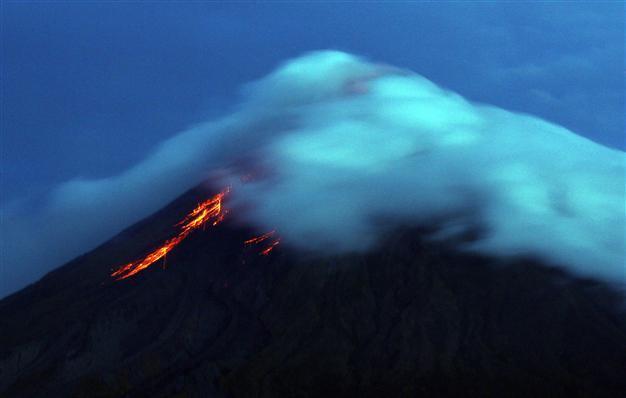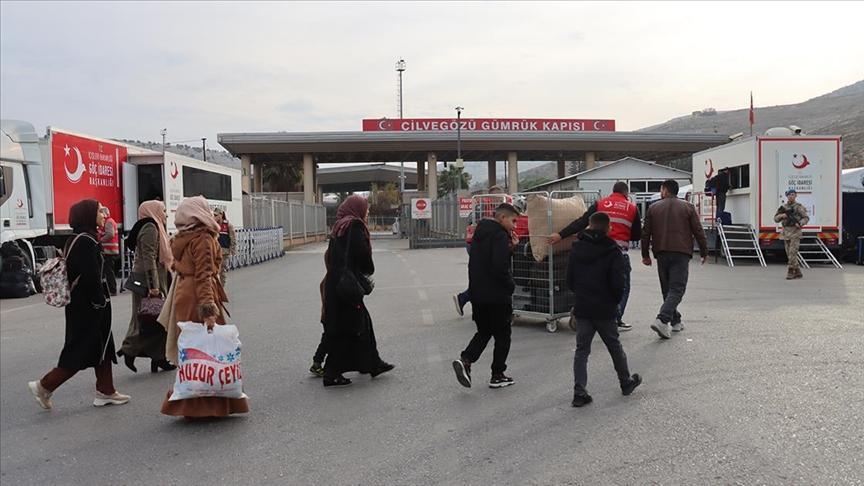Rushed evacuations as Philippine volcano spews lava
LEGAZPI, Philippines - Agence France-Presse

Lava flows from the crater of Mayon volcano seen from Legazpi City, Albay province, southeast of Manila on September 17, 2014. Lava continued to cascade down the Philippines most active volcano on September 17 as authorities rushed to evacuate thousands ahead of a possible deadly eruption. AFP Photo
Lava cascaded down the Philippines' most active volcano on Sept. 17 as authorities rushed to evacuate thousands ahead of a possible deadly eruption.Mostly women, children and the elderly carrying bags of clothes were hauled out of farming villages near Mayon volcano's slopes on board army trucks and minibuses.
Soldiers went from house to house asking residents to evacuate, after authorities on Monday raised the third highest alert in a five-step scale, meaning a full-scale eruption is possible "within weeks".
Before dawn Wednesday, Mayon's crater glowed red as molten rocks flowed as far as halfway down its slopes.
The volcano's world-renowned perfect cone appeared to have been deformed, swollen with lava that had risen from the Earth's core.
At least 8,000 of the target 50,000 people had been moved to temporary shelters, with the operation expected to run for three days, regional civil defence director Bernardo Alejandro told AFP.
However he said the evacuation operation was sapping precious disaster-relief funds and manpower in Albay province, which is regularly battered by typhoons at this time of year.
"The province can sustain them [in evacuation centres] for not more than a month... we cannot exhaust all our disaster funds on Mayon," Alejandro said.
The deadliest and most powerful of the roughly 20 typhoons that batter the Philippines every year happen towards the end of the year, bringing floods, landslides and storm surges to eastern provinces such as Albay that face the Pacific Ocean.
State volcanology agency director Renato Solidum said more magma was moving up the crater each day, although for the time being the alert level would remain at three. Level five means an eruption is occurring.
The 2,640-metre Mayon, located about 330 kilometres southwest of Manila, is a draw for local and foreign tourists but an enduring danger for anyone getting too close.
Four foreign tourists and their local tour guide were killed when Mayon last erupted, in May 2013.
In December 2006, 1,000 people died as a strong typhoon hit near Mayon, unleashing an avalanche of volcanic mud from an eruption four months earlier.
In 1814, more than 1,200 people were killed when lava flows buried the town of Cagsawa.
















